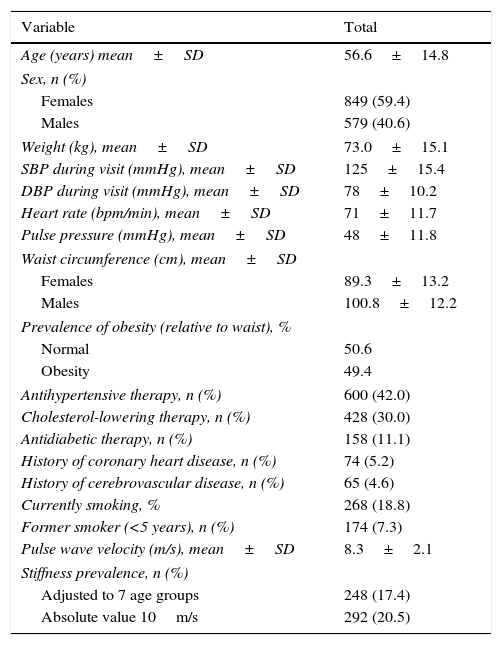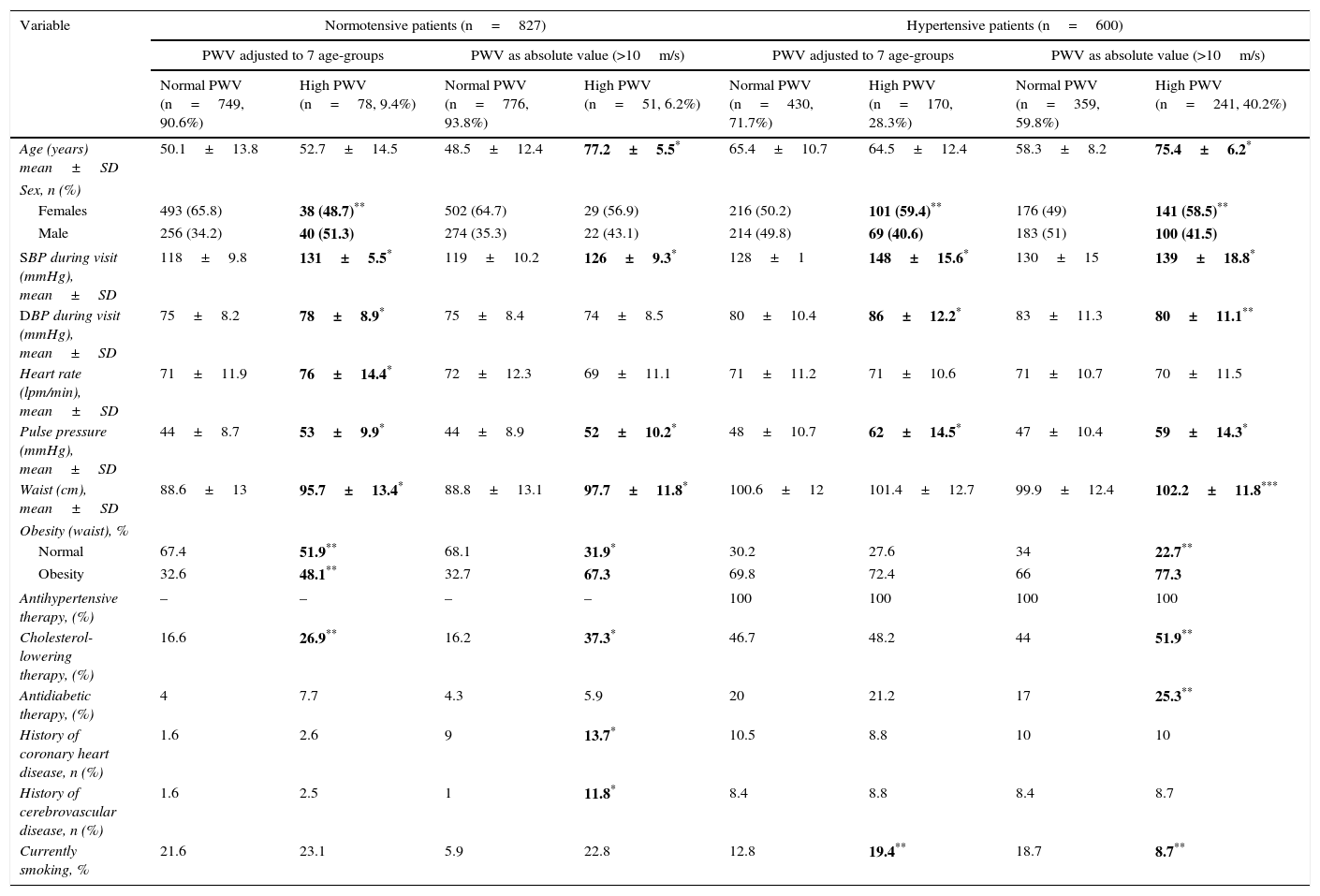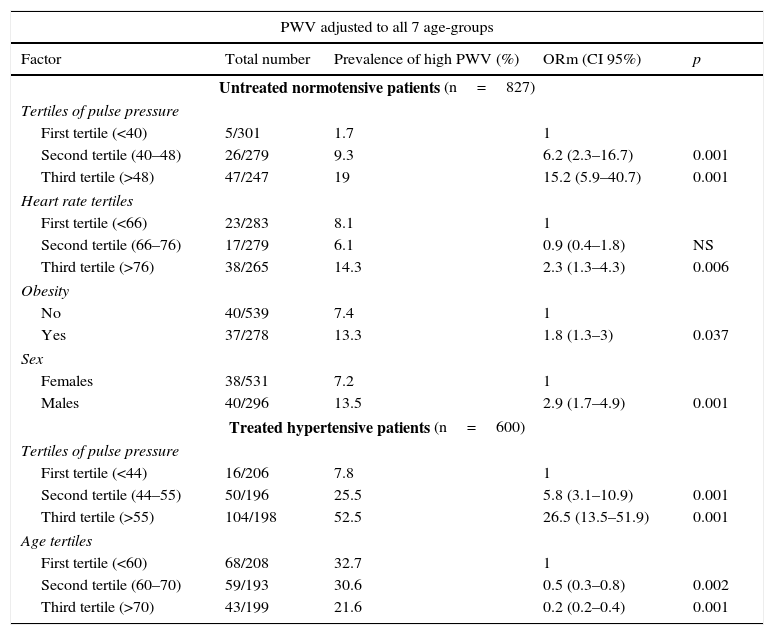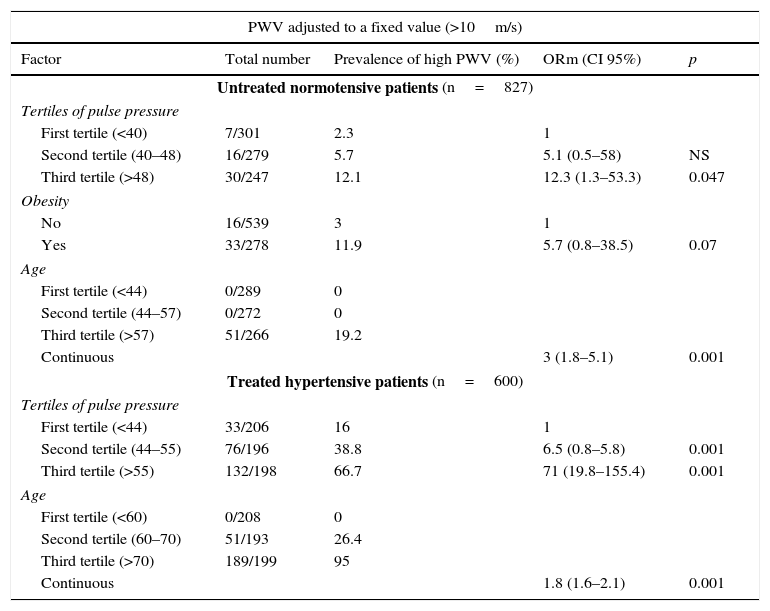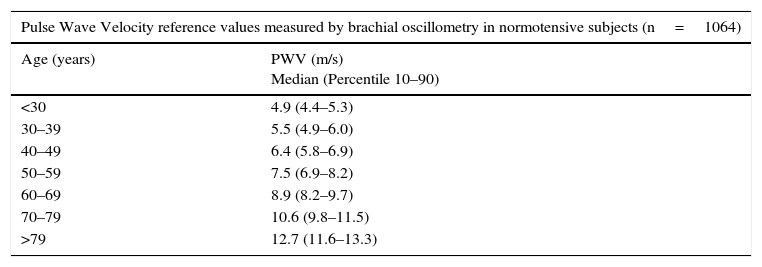Arterial stiffness (AS) is a well-recognized target organ lesion. This study aims to determine: (1) the frequency of AS in community pharmacies; (2) if stiffened subjects identified by brachial oscillometry have more CV risk factors than normal subjects, and (3) the dependence of stiffness on using either age-adjusted values or a fixed threshold.
Patients and methodObservational, cross-sectional study in 32 community pharmacies of the Valencia Community, between November/2015 and April/2016. Stiffness was as pulse wave velocity (PWV) measured with a semi-automatic, validated device (Mobil-O-Graph®, IEM), followed by a 10-item questionnaire.
ResultsMean age of the 1427 consecutive recruited patients was 56.6 years. Overall proportion of patients with AS was 17.4% with age-adjusted PWV (9.4% in normotensives, 28.3% in hypertensives). Multivariate logistic regression showed independent association of stiffness in normotensives with male gender, obesity, higher pulse pressure and heart rate, in hypertensives, with higher pulse pressure and lower age. AS was globally found in 20.5% of subjects, defining stiffness by PWV>10m/s (6.2% in normotensives, 40.2% in hypertensives). It was associated with higher age and pulse pressure in both groups. Concordance in classifying stiffness was 74.6%.
ConclusionsFrequency of AS varied between 17.4% and 20.5%. Age-adjusted stiffness is associated in normotensives with male gender, pulse pressure, obesity and heart rate, in hypertensives with pulse pressure and inversely to age. Stiffness by 10m/s is determined by higher pulse pressure and higher age. Both definitions of PWV are not interchangeable.
La rigidez arterial (RA) es una lesión de órgano diana reconocida. El objetivo es determinar: 1) su frecuencia en farmacias comunitarias; 2) si sujetos con RA presentan más factores de riesgo CV, y 3) su dependencia de una definición ajustada por grupos de edad o valores fijos.
Pacientes y métodoEstudio observacional transversal en 32 farmacias comunitarias de la Comunidad Valenciana entre noviembre de 2015 y abril de 2016. La RA como velocidad de onda de pulso (VOP) se midió mediante un dispositivo validado semiautomático (Mobil-O-Graph®, IEM), seguido de un cuestionario de 10 preguntas.
ResultadosLa edad media de los 1.427 participantes consecutivos fue 56,6 años. La proporción de pacientes con RA fue 17,4% (9,4% en normotensos, 28,3% en hipertensos) con ajuste por grupos de edad. La regresión logística multivariante mostró en normotensos una asociación de la RA con el sexo masculino, la obesidad, una mayor presión de pulso y la frecuencia cardiaca, y en hipertensos, con una mayor presión de pulso y una menor edad. Definiendo RA por VOP>10m/s, el 20,5% global (6,2% en normotensos, 40,2% en hipertensos) presentó RA. Se asoció a mayor edad y presión de pulso en normotensos e hipertensos. La concordancia de RA entre ambas definiciones fue del 74,6%.
ConclusionesLa RA varió entre el 17,4 y el 20,5%. La RA ajustada por edad se asocia en normotensos a sexo masculino, presión de pulso, obesidad y frecuencia cardiaca, y en hipertensos, a mayor presión de pulso y menor edad. Los determinantes de RA medida como VOP>10m/s son mayor presión de pulso y mayor edad. Ambas definiciones de RA no son superponibles.







